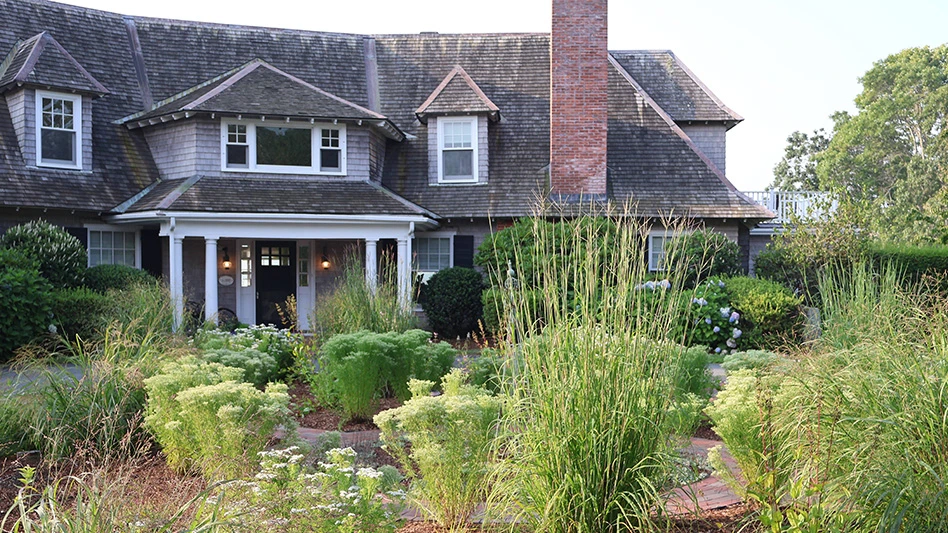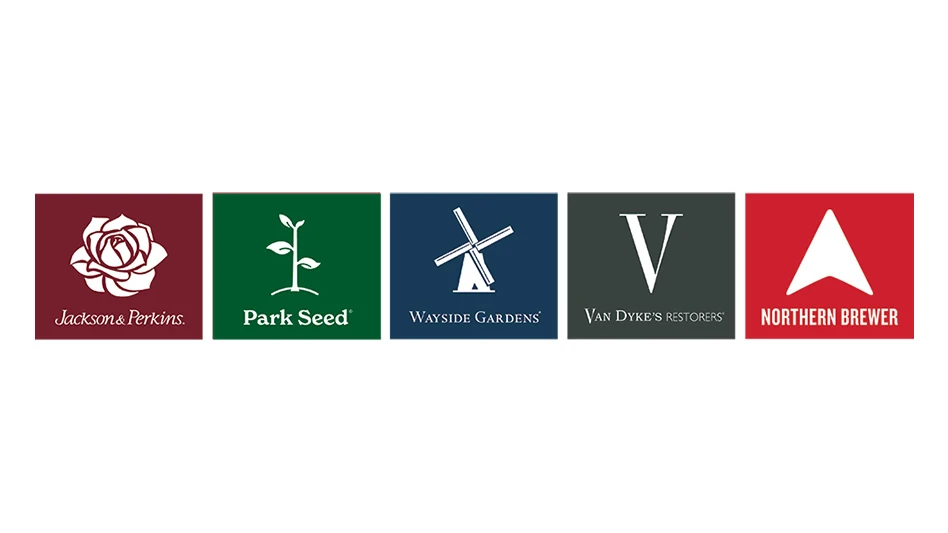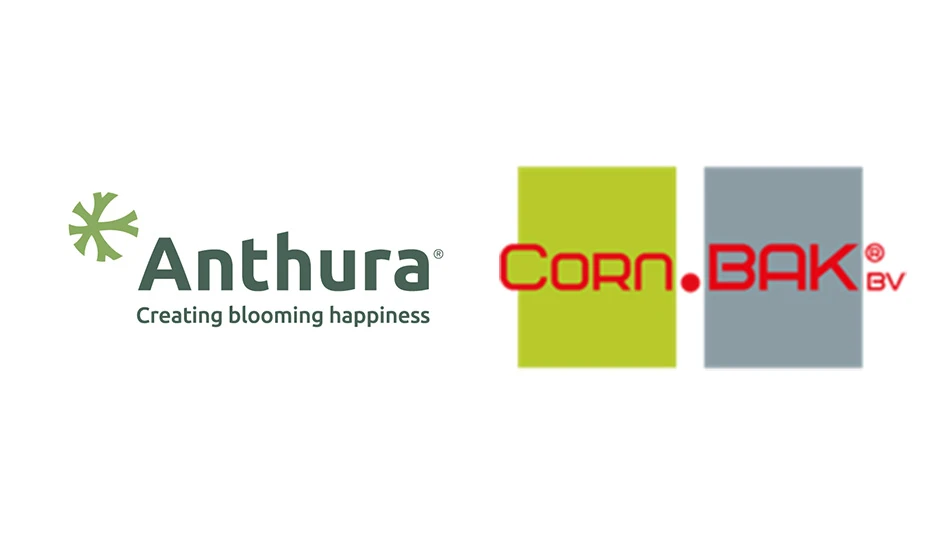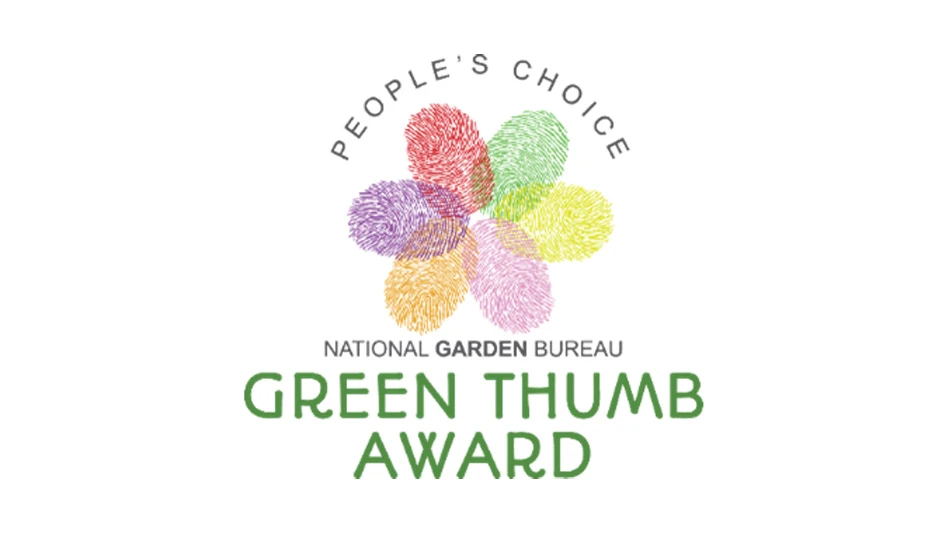
Then & now
THOUGH WE WOULD BE out of business if this was always the case, sometimes, no news is good news. That’s what we’ve discovered while comparing results of the 2015 State of the Industry research to the reports we published in 2013 and 2014. Sales are up again for most garden centers, annuals, perennials, trees and shrubs continue to top the green goods category and weather is still the No. 1 external, uncontrollable factor that determines success year after year. There are some differences in this report compared to the past two years, which we highlight on the following pages, but for the most part, the industry, and the housing market, has been slowly improving since the economic downturn in 2008.
This year, we’ve been celebrating our 20th anniversary at Garden Center magazine by comparing content found in our 1995 issues to trends today. There are some incredibly drastic differences. For example, the Internet was still very much in its infancy two decades ago. Writers debated the value of the World Wide Web and whether garden centers should go virtual. Though there was no State of the Industry Report that year, we did publish an article, “The Garden Renaissance: 96 trends for 1996 and beyond.” The final trend was, “The Internet/The Anti-Internet: While on-line [sic] business and communication will continue to explode, there will be an opposing opportunity for garden centers and other retailers to market themselves as the alternative to so-called virtual reality. Plants, after all, are the real thing.”

What garden centers have discovered, of course, is that they must provide both information that is accessible and available on websites, social media and other platforms as well as products that give customers opportunities to connect with the Earth and garden.

Numbers are essential to understanding the market and industry, and more garden centers are using metrics to determine profitable categories, customer demographics and more. But digits tell us just part of the story. Throughout this year’s State of the Industry report, we have included information on what was happening in 1995 compared with today. We also spoke to a group of independent garden center owners and operators from across the country to get their thoughts about the current state of the industry, and have included their comments throughout. We’ve discovered that sometimes, history repeats itself, that there is reason for optimism for garden centers, and the impact the Internet and social media has had on the industry and the world is immeasurable.
Getting to know you:
SURVEY DEMOGRAPHICS
Our take

Half of survey respondents indicated they have a gift and décor department at their garden center this year, and we wonder if the same would have been true in 1995. An article in the July issue provided tips for building a giftware business from the ground up, citing benefits such as high mark ups and diversified product offerings as reasons to implement this category. Many garden centers also reported that they offer custom container creation and landscape design services, perhaps an indication that customers want help with their gardening projects.
WE’VE HAD A GIFT department for two years. We worked hard at putting product in and new hard goods and gift lines to make it more of a year-round experience. Most of our competition closes as soon as the season is over, but we keep ours going year-round. We just doubled our gift area of hard goods. It’s a new, growing thing for us.” — MICK GAINAN, CO-OWNER, GAINAN’S FLOWERS AND GARDEN CENTER, BILLINGS, MONTANA
IN 2006 AND 2007 we actually changed our focus a little bit. We used to have a landscaping crew, and we were seeing a trend where we were getting a lot of landscapers coming to us, asking our opinion. So what we did is dissolved the landscaping business part of it and turned into more of a wholesale for contractors. Right now we have over 100 contractors that we work with in the area … We have been trying to educate a lot of the contractors more on how to install pavers. You get people who don’t know how to and they just want to go out and do it. We’re starting to do more educational-type things for contractors. I think that’s something that helps us grow, too. They are going to come back and buy more product from us if we can help make them successful.” — CHRISTINE STENLI, CO-OWNER, NORTHERN PINES GREENERY, MINOCQUA AND HAZELHURST, WISCONSIN



Management
OVERALL SALES, STAFFING & MORE
In 2014, we noticed a wonderful trend: business was improving for garden centers. That year, 73 percent reported that business was better than the year before, compared to just 53 percent in 2013. Additionally, about a quarter of garden centers we surveyed in 2013 said that sales had declined for them. This year, though a smaller number of retailers reported increased sales (67 percent), 85 percent of respondents said business was steady or better than 2014, which is a welcome sign that the industry has recovered for many since the 2008 economic downturn.

I THINK THE STATE OF THE INDUSTRY is good. The suppliers of the plants are in good position with inventory to supply us, being the retailers and landscape contractors, with product as the economy continues to grow. I feel like we’re in a good position to meet the challenges that the new thriving economy is going to bring. I really do feel like the economy is starting to improve.” — KYLE VAN PUTTE, CEO AND PRESIDENT, VAN PUTTE GARDENS, ROCHESTER, NEW YORK
What internal factor do you think impacted your garden center’s 2015 selling season the most?

“We opened our doors in April of 2000, and business has been really good for us. We’ve always been growing every single year since we opened our doors. We’re a second homeowner/tourist destination, so we tend not to see as much [change] like say in the big cities. When the economy took a downturn, it didn’t affect us in particular. People who weren’t going to take the big extravagant trips were still coming to their second homes in Northern Wisconsin and still spending money to spruce up their houses and landscapes.” — CHRISTINE STENLI, co-owner, Northern Pines Greenery, Minocqua and Hazelhurst, Wisconsin


SALES WERE UP FOR US PRETTY MUCH across the board. We saw large trees all the way down to pottery increase. What really seems to be selling well for us is seeds. We seem to be selling more edible seeds and more vegetable and herb starts than in previous years. I know we have sold more annual combination baskets, hanging baskets and combination pots than in previous years.” — ANGIE HUGHES, OWNER, PINE LANE NURSERY, PARKER, COLORADO
Sales
THE DETAILS — WHICH CATEGORIES PERFORMED WELL?
For the second year in a row, respondents said sales of annuals have increased more than any other category in green goods, followed by trees and shrubs, perennials and edibles. That was not the case in 2013, when the ranking was annuals, edibles, trees/shrubs and perennials. That year, 18 percent of garden centers, more than in any other category, said tree and shrub sales fell. As the housing market continues to grow, customers may begin to establish roots with trees and perennials, and those numbers could grow. On the flip side, selling trees is still a challenge, as 14 percent noted that tree and shrub sales accounted for their biggest sales decline. Furniture, fountains and statuary, another category that can be slow-moving, topped the declining sales list. Overall, green goods saw much larger sales increases than categories like home décor and birding, signaling that though diversification is important, plants remain king.

“OUR BUSINESS, THE HEART AND SOUL OF WHAT WE DO, is really meaningful across all generations. We believe here that space matters, that we are helping people with their gardens and with their homes, and these are areas that they hold dear, that are important and that can really have an impact on the quality and value of someone’s life. So we think we are meaningful, and we don’t think we are less meaningful to Millennials then we were to Boomers, but gardening is no longer the No. 1 hobby. We’re not only competing with people in terms of selling plants, but we are competing with things that are taking up people’s time and attention. The context is different, and we have to figure out how to serve these different audiences and meet them where they are. We cannot just wait and say, ‘Well, they are going to mature to a certain place to their life where they’re suddenly going to start gardening.’” — JULIE KOUHIA, CEO OF MOLBAK’S GARDEN + HOME, WOODINVILLE, WASHINGTON

» GREEN GOODS SALES
All indicators show that annual sales performed well this year for many garden centers, but other categories like edibles and perennials saw even bigger increases. People are looking for gardens that sustain themselves year after year and do more than look pretty.

THE SENSE OF URGENCY has increased this year, meaning the speed in which it takes to capture the potential is happening much faster now. The reaction time I would say is one of our big attributes and why we’ve been able to grow revenue this year. If somebody comes in and wants something on Saturday [and we don’t have the item], we want to make sure and try to have it on Thursday or Friday. If you can’t react that fast, you are probably going to lose their interest. People’s time is so limited. If they give you a shot, you have to figure out how to get it done.” — SCOTT ENGH, CO-OWNER, SUN RIVER GARDENS, OREM, UTAH
THE TOP 10: Garden centers indicated they sell the following edible plants:
- Tomatoes: 82%
- Herbs: 78%
- Hot peppers: 76%
- Sweet peppers: 76%
- Zucchini/squash: 75%
- Cucumber: 74%
- Strawberries: 71%
- Eggplant: 69%
- Blueberries: 68%
- Broccoli: 68%

» GIFT/DÉCOR/HARD GOODS SALES

Marketing
SPREADING THE WORD AND DIFFERENTIATING YOUR STORE
Twenty years ago, Facebook, Twitter and other social media platforms didn’t exist. Now, garden centers use those avenues more than any other to market and promote their stores. Only a little more than half still advertise in newspapers, and a mere 35 percent advertise on the radio. In 2013, 63 percent were advertising in newspapers. TV and direct mail were suggested as profitable methods to advertise in 1995; now just 21 percent and 30 percent, respectively, advertise their brands that way.


ODDLY ENOUGH, we’re getting a lot of 18-, 20-, and 25-year-olds in. They are looking for air plants, succulents, things such as unique little jewelry, little gifts for friends, gourmet food, candy, just a weird mix of stuff. It’s hard to describe — this year I’ve just seen more young [people] in our store. Bloggers are noticing us. — SCOTT ENGH, CO-OWNER, SUN RIVER GARDENS, OREM, UTAH
Looking outside of the garden center retail industry
State of the LANDSCAPE INDUSTRY

As landscapers finish up the 2015 season, they’re experiencing one of the best years since the Great Recession. Across the country, contractors report spending by customers is back on the rise, especially on outdoor living areas like patios and water features, something garden center retailers can capitalize on. A full-service model still dominates for the average landscaper: maintenance services (mowing, trimming and edging) make up 43 percent of the average company’s top line revenue, with a mix of design/build and lawn care services rounding out the top three. But as the economy and business has bounced back, landscapers have been limited by the lack of good help: A quality labor shortage is cited as having the biggest impact for the next three years by Lawn & Landscape readers. – Chuck Bowen, editor of Lawn & Landscape
Lawn & Landscape’s State of the Industry report was published in its October edition.
State of the GREENHOUSE INDUSTRY

THIS YEAR, ABOUT TWO-THIRDS OF GROWERS reported increased sales, a sign of the continued growth of the industry. Although this is just below last year’s numbers (70 percent), only eight percent of growers reported decreased sales, which is on par with 2014, and we see more growers reporting flat sales. The combination of the flat and increased sales still totals about 90 percent, which bodes well for the industry. To give a bit of perspective, only 51 percent of respondents said their sales were up in 2012, and we’ve seen steady growth since then.
Interestingly, despite steadily rising shipping, input and other costs, we still aren’t seeing growers raise plant prices this year much more than last year. Slightly more growers raised their prices in the one to four percent range this year, but slightly fewer raised them at the five percent or higher levels.
— Karen E. Varga, editor of Greenhouse Management
Greenhouse Management’s State of the Industry report was published in its October edition.
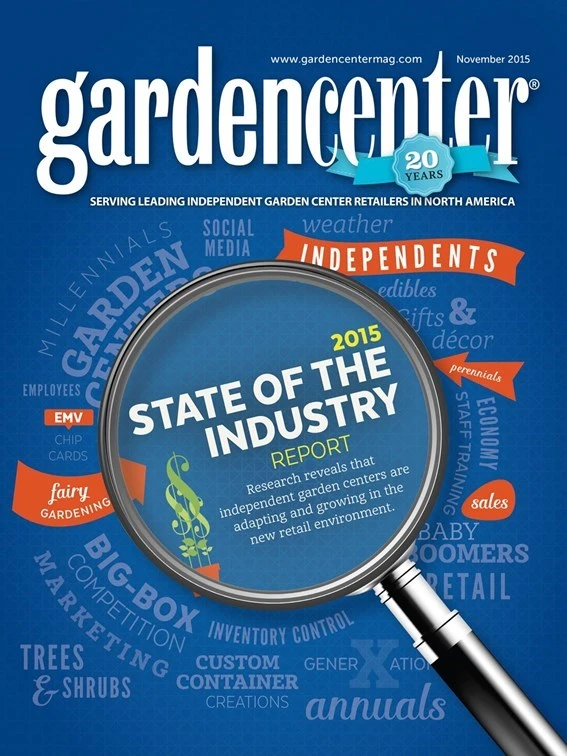
Explore the November 2015 Issue
Check out more from this issue and find your next story to read.
Latest from Garden Center
- [WATCH] Looking Back to Spring Ahead: Where we’ve been & where the industry is headed in 2026
- Seed Your Future plans to bring 80+ students to MANTS 2026
- Donna McGinnis named next CEO of Denver Botanic Gardens
- HRI Leadership Academy opens applications for 2027 class
- Sustainabloom introduces Sustainability Planning Template for Retail Florists
- Burpee releases commemorative seed collection to celebrate America's 250th anniversary
- New Michigan box tree moth alert available in English and Spanish
- Seed Your Future announces board updates, 2025 Cross-Curricular Career Lessons
